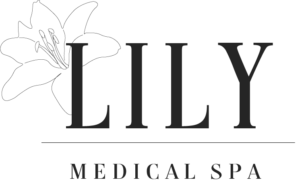Introduction
Hyperbaric oxygen therapy (HBOT) is a medical treatment that involves administering pure oxygen in a pressurized environment, typically within a hyperbaric chamber. This therapy has a wide range of applications and is utilized to treat various medical conditions by enhancing the body’s oxygen supply and promoting healing.
Wound Healing and Tissue Repair
One of the primary uses of HBOT is in wound healing and tissue repair. The increased pressure and higher oxygen concentration delivered during the therapy accelerate the healing process by promoting the growth of new blood vessels (angiogenesis) and enhancing collagen production. HBOT is particularly effective in treating non-healing wounds, diabetic ulcers, and radiation-induced tissue damage.
Carbon Monoxide Poisoning and Gas Embolism
HBOT is a critical treatment for carbon monoxide poisoning and gas embolism. In cases of carbon monoxide poisoning, the therapy rapidly eliminates carbon monoxide from hemoglobin, preventing tissue hypoxia. For gas embolism, the increased pressure helps shrink gas bubbles, allowing them to dissolve more effectively and reducing the risk of vascular blockages.
Decompression Sickness and Diving Injuries
Decompression sickness, often referred to as “the bends,” occurs when nitrogen bubbles form in the bloodstream due to rapid changes in pressure, such as ascending too quickly from a deep dive. HBOT facilitates the removal of these bubbles and promotes faster recovery. It’s also used to treat other diving-related injuries, such as arterial gas embolism.
Infections and Antibiotic-Resistant Organisms
HBOT has shown promise in enhancing the body’s immune response to infections and improving the effectiveness of certain antibiotics. It creates an environment that is toxic to certain bacteria and promotes the action of white blood cells. This makes it a useful adjunctive therapy for severe infections, especially in cases of antibiotic-resistant organisms.
Radiation Injury and Osteoradionecrosis
Radiation therapy for cancer can lead to tissue damage and delayed healing. HBOT helps mitigate the effects of radiation by increasing oxygen supply to damaged tissues, promoting angiogenesis, and reducing inflammation. It’s particularly valuable in treating osteoradionecrosis, a condition in which radiation-damaged bone becomes susceptible to infection and necrosis.
Neurological Conditions
HBOT is being explored for its potential to treat certain neurological conditions, including traumatic brain injuries, stroke, and neurodegenerative disorders. The therapy’s ability to improve oxygen delivery to brain tissue and promote neuroplasticity may contribute to better outcomes in these conditions, although research in this area is ongoing.
Cosmetic and Reconstructive Surgery
In cosmetic and reconstructive surgery, HBOT can aid in tissue graft survival and enhance wound healing. The therapy promotes the growth of blood vessels and collagen, which are essential for successful tissue integration and aesthetic outcomes in procedures such as skin grafts and flap surgeries.
Conclusion
Hyperbaric oxygen therapy is a versatile medical treatment with diverse applications. From wound healing and carbon monoxide poisoning to infections and neurological conditions, HBOT’s ability to enhance oxygen supply, promote tissue repair, and stimulate healing processes makes it an invaluable tool in modern medicine. As research continues, the potential uses of HBOT in various medical scenarios are likely to expand, offering new avenues for improving patient outcomes.

